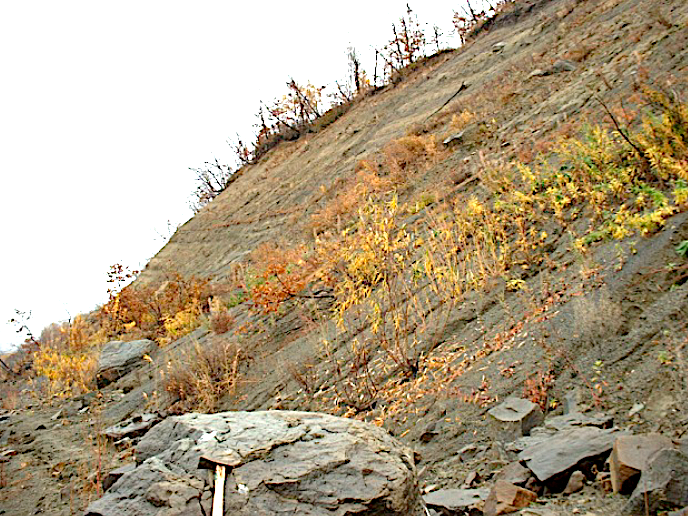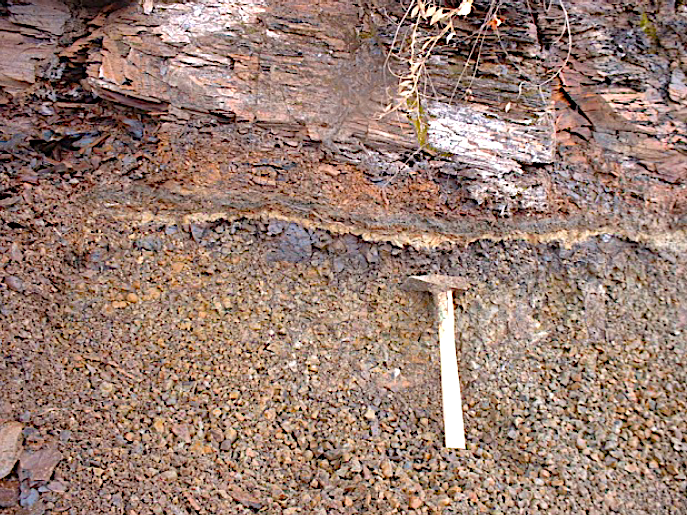Yongancun Fm
Type Locality and Naming
Jiayin Basin. The Yongancun Formation was erected by the Heilongjiang First Regional Geological Survey Team in 1979. The section for the designation is at Heilongjiangqian northwest of the Yongan Village of the Jiayin County of Heilongjiang (130°30′44″E; 48°54′16″N). [This is the lower formation of Jiayin Gr .]
Synonym: Yong'ancun Fm
[Figure: Type section of Yongancun Formation near Yongan Village of Jiayin County]
Lithology and Thickness
The Yongancun Formation is represented by a set of normal clastic rocks with evaporite and pyroclastic rocks, dominated by gray green, gray and yellow gray fine-grained arkose sandstone, siltstone, sandy mudstone and mudstone, with thin-bedded conglomerate , gravel-bearing sandstone, grit and marl, gypsum and lenticular thin coal beds. The Yongancun Formation is 158.9 m thick.
Relationships and Distribution
Lower contact
Its base is unknown. On the Huoshaoqiao section there oucrops the acid volcanic rocks of the Lower Cretaceous Ningyuancun Fm that is not far away from the lower part of the Yongancun Formation. It is inferred from its mode of occurrence that the Yongancun Formation should lie unconformably on the Ningyuancun Fm but is not directly exposed. [HOWEVER -- Kosenko et al. (2021) do not indicate a Ningyuancun Fm or a Banzifang Fm, but imply a major discontinuity of the Yongancun Fm onto the mid-Cretaceous Taoqihe Fm.]
Upper contact
Its top marked by acid tuffaceous sandstone is distinguished from oil shale of the overlying Taipinglinchang Fm, and shows a conformable contact with the latter.
[Figure: Boundary between Yongancun (lower) and Taipinglinchang (upper) formations near Yongan Village of Jiayin County]
Regional extent
The present formation occurs at the Yongan Village on the bank of the Heilong River, and in the Huoshaoqiao and Taipinglinchang areas. It becomes coarser in grain size from east to west, is 440.6 m thick in the Huoshaoqiao area, and there appear tuff and tuffaceous sandstone in the lower part. In the Taipinglinchang area only the upper part of the formation is observed with a thickness of more than 103.6 m, and 158.9 m in the Yongancun village.
GeoJSON
Fossils
The formation yields ostracods Cypridea tera, Candona prona, Candoniella sp., Ziziphocypris concta, Z. simakovi; floras Taxodium sp., Cercidiphyllum sp.; sporopollen grains Bearpreaidites sp., Lythraites triangullatus, Proteacidites sp., Aquilapollenites sp., Gothanipollis sp.
Age
Depositional setting
It belongs to lacustrine deposition.
Additional Information

